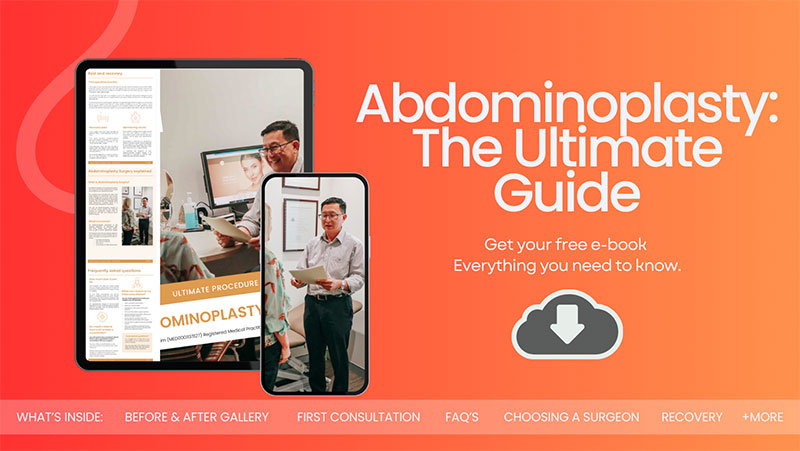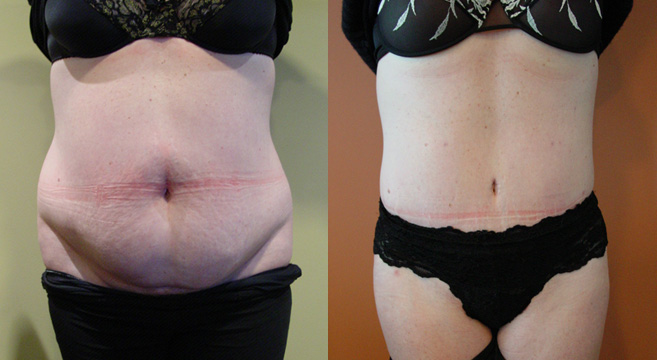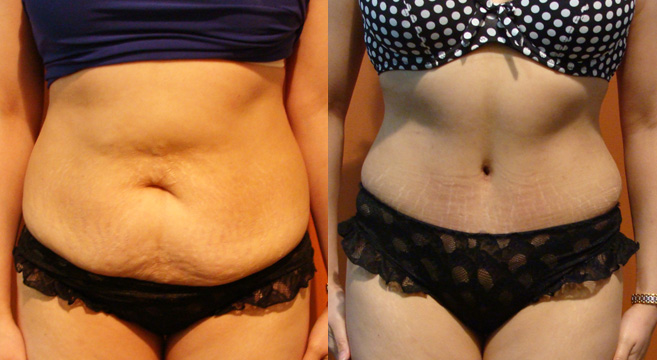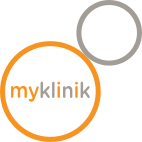Techniques for Natural-Looking Results
Abdominoplasty, commonly known as a tummy tuck, is a procedure that can help you get rid of excess skin at the level of the abdominal wall. One important aspect of this procedure is the placement of the belly button, which can impact the overall outcome.
Sydney Specialist Plastic Surgeon Dr Jake Lim will explore the importance of belly button placement in abdominoplasty and discuss the techniques used to ensure natural-looking results.
Download Dr Lim’s Abdominoplasty Guide

Significance of Belly Button Placement in Abdominoplasty
Like mentioned before, the placement of the belly button, or umbilicus, is a crucial aspect of abdominoplasty that can impact the overall outcome of the procedure. The belly button is a central focal point of the abdomen, and its appearance and positioning play a vital role in creating a natural-looking, harmonious result.
In an abdominoplasty, Dr Lim removes excess skin and fat from the abdominal area and tightens the underlying muscles to create a flatter, more toned appearance. During this process, the belly button is often repositioned to ensure it remains proportionate to the new abdominal contours. Improper placement of the belly button can lead to an unnatural or asymmetrical appearance, detracting from the overall results of the procedure.
What Is the Optimal Placement for Belly Button Placement in Abdominoplasty
Dr Lim uses several anatomical landmarks and aesthetic principles to determine the optimal placement of the belly button during an abdominoplasty. The goal is to create a natural-looking belly button that is proportionate to your body and complements the newly contoured abdomen.
Anatomical Landmarks:
- Iliac Crests: The iliac crests are the upper borders of the hip bones. The belly button is usually positioned at the level of the iliac crests.
- Midline: The belly button should be placed along the midline of the abdomen, which is an imaginary vertical line that divides the body into left and right halves.
Aesthetic Principles:
- Proportion: The belly button should be positioned at a level that is aesthetically pleasing and proportionate to the patient’s height and abdominal length. A general rule of thumb is to place the belly button at about 3/5ths of the distance from the xiphoid process to the pubic symphysis.
- Shape: The shape of the belly button should be considered when determining its placement. An oval-shaped belly button is often considered more aesthetically pleasing than a perfectly circular one.
- Depth: The depth of the belly button should also be taken into account. A slightly recessed belly button with a subtle shadow effect is generally considered more natural-looking than a flat or protruding one.
- Symmetry: The belly button should be placed symmetrically in relation to the abdominal muscles and the hip bones to ensure a balanced appearance.
During the abdominoplasty procedure, Dr Lim will make initial markings based on these anatomical landmarks and aesthetic principles. However, he may make intraoperative adjustments to the belly button placement based on your unique anatomy, skin elasticity, and the amount of excess skin removed. Dr Lim will also consider your individual preferences and goals discussed during the preoperative consultation.
By combining these anatomical landmarks, aesthetic principles, and intraoperative adjustments, Dr Jake Lim can determine the optimal placement of the belly button during abdominoplasty.

Traditional Belly Button Placement Techniques
Standard Umbilical Transposition
- Description: The belly button is detached from the surrounding skin but remains connected to its base on the abdominal wall. After excess skin removal, a new opening is created for the belly button to be pulled through to its original location.
- Use: Common in traditional abdominoplasty procedures for patients who want their belly button in the same position.
- Pros: Maintains the natural position of the belly button.
- Cons: The original belly button remains but can sometimes appear unnatural without additional sculpting.
Vertical Incision Technique
- Description: A vertical incision is made to create a slit for the belly button, which is repositioned after skin tightening.
- Use: A traditional method commonly used in older techniques.
- Pros: Effective for belly button repositioning.
- Cons: Can leave a visible vertical scar, though it is hidden within the belly button fold.
Anchor Shaped Incision (Inverted-T)
- Description: This technique involves making a circular incision around the belly button and then a vertical incision down the abdomen, forming an inverted T.
- Use: Often used when extensive skin removal is needed, providing more skin manipulation.
- Pros: Allows for significant skin tightening.
- Cons: Can leave more visible scars compared to other techniques.

Other Belly Button Placement Techniques
Floating Belly Button (UMB Float)
- Description: The belly button is temporarily detached from the abdominal wall and left floating while the skin is tightened. It is then sutured back into place at a new, aesthetically pleasing position.
- Use: Allows flexibility in adjusting the belly button position, especially when a more significant change is needed.
- Pros: Provides better control over final placement, resulting in more natural-looking outcomes.
- Cons: Requires careful surgical precision to avoid complications with healing or appearance.
Circular Incision
- Description: A circular incision is made around the existing belly button, which is then removed. The skin is pulled down, and a new circular incision is made to create a new belly button.
- Use: Suitable for patients who need a complete belly button redesign.
- Pros: Creates a fresh, well-shaped navel.
- Cons: The original belly button is discarded, and scars might be more visible.
Triangular Incision
- Description: A triangular incision is made above the belly button, allowing better control over its shape and position. The triangular flap is sutured to the abdominal wall, creating a natural shadow effect.
- Use: Recommended for patients desiring a well-defined and shadowed navel.
- Pros: Creates a natural depth and shadow for a realistic look.
- Cons: Requires precise technique and may not be suitable for all patients.
Dermal Grafting
- Description: A small dermal graft from excess abdominal skin is used to create a new belly button. The graft is sutured to the abdominal wall and covered with surrounding skin.
- Use: Useful for patients requiring a more pronounced belly button.
- Pros: Enhances the appearance of a more defined and natural-looking navel.
- Cons: Involves additional tissue manipulation, which may not be appropriate for all cases.
Neo-Umbilicoplasty
- Description: A new belly button is created using a small skin flap from the abdominal skin. The flap is folded and sutured to mimic the depth and shadow of a natural belly button.
- Use: Recommended for patients who want a completely new belly button due to prior surgery or dissatisfaction with the original navel.
- Pros: Highly customisable, resulting in a natural belly button.
- Cons: More complex than simpler transposition techniques and requires advanced surgical skill.
Hidden Scar Technique
- Description: A more discreet incision is made inside the belly button, allowing repositioning while hiding the scar within the folds of the navel.
- Use: Suitable for patients wanting minimal visible scarring.
- Pros: Leaves little to no visible scars, offering a natural appearance.
- Cons: Not always feasible depending on the patient’s anatomy.
Progressive Tension Sutures (PTS)
- Description: This technique involves placing sutures that gradually reduce tension around the belly button, allowing for a more natural placement and minimising scarring.
- Use: Useful in preventing unnatural pulling or puckering of the belly button.
- Pros: Results in a smoother, more natural transition around the navel area.
- Cons: Requires precise suturing and technique for optimal results.
Can Belly Button Placement Affect the Overall Results of an Abdominoplasty?
Belly button placement can affect the overall results of an abdominoplasty. The belly button is a central focal point of the abdomen, and its appearance and positioning can greatly influence the aesthetic outcome of the procedure.
Importance of Belly Button Placement:
- Natural Appearance: The goal of an abdominoplasty is to create a smooth, flat, and natural-looking abdomen. Proper belly button placement is crucial in achieving this natural appearance. A misplaced or poorly shaped belly button can draw attention away from the otherwise well-contoured abdomen and make the results look artificial.
- Proportion and Symmetry: A well-placed belly button should be proportionate to the patient’s body and symmetrical in relation to the abdominal muscles and hip bones. A belly button that is too high, too low, or off-centre can disrupt the balance and harmony of the abdominal area.
- Patient Satisfaction: Patients undergoing abdominoplasty often have high expectations for their results. A misplaced or unattractive belly button can lead to patient dissatisfaction, even if the rest of the abdomen looks smooth and flat.
Consequences of Poor Belly Button Placement:
- Revision Surgery: If the belly button placement is unsatisfactory, the patient may require a revision surgery to correct the issue. This can involve additional costs, recovery time, and potential risks associated with another surgical procedure.
- Visible Scarring: Poor belly button placement or technique can result in visible scarring around the belly button, which can detract from the overall aesthetic result of the abdominoplasty.
FAQs about Abdominoplasty and Belly Button Placement

How does skin elasticity affect the outcome of belly button placement?
Skin elasticity can determine the outcome of belly button placement during an abdominoplasty. Elasticity refers to the skin’s ability to stretch and then return to its original shape and position. Patients with good skin elasticity typically achieve better results and more natural-looking belly buttons than those with poor skin elasticity.
Impact of skin elasticity on belly button placement:
- Skin Redraping: During an abdominoplasty, excess skin is removed, and the remaining skin is stretched and recontoured over the abdominal area. In patients with good skin elasticity, the skin can be smoothly redraped around the newly positioned belly button, creating a natural-looking appearance. However, in patients with poor skin elasticity, the skin may not conform as well to the new belly button position, leading to a less aesthetically pleasing result.
- Healing Process: Skin elasticity also affects the healing process after abdominoplasty. Patients with good skin elasticity are more likely to have a smoother, more even healing process, with less visible scarring around the belly button. In contrast, patients with poor skin elasticity may experience more noticeable scarring or even skin puckering around the belly button.
- Long-Term Results: The long-term results of belly button placement can also be influenced by skin elasticity. Over time, patients with good skin elasticity are more likely to maintain the shape and position of their new belly button, as the skin continues to conform to the contours of the abdomen. Patients with poor skin elasticity may experience some stretching or sagging of the skin around the belly button, which can alter its appearance.
Can I choose the shape of my new belly button during abdominoplasty?
- In most cases, you can discuss your preferences for belly button shape with your plastic surgeon prior to the procedure. However, the final shape may be influenced by factors such as individual anatomy, skin elasticity, and the amount of excess skin removed. Dr Jake Lim works closely with you to understand your goals and strives to create a natural-looking belly button that complements the new abdominal contours.
Is it possible to have an “outie” belly button after abdominoplasty?
- While most patients prefer an “innie” belly button, it is possible to create an “outie” belly button during abdominoplasty if desired. This can be achieved by leaving a slight protrusion of the belly button stalk and suturing the skin around it. However, an “outie” belly button may be more prone to irritation from clothing and may not appear as natural as an “innie” belly button.
Can I have my belly button removed entirely during abdominoplasty?
- Although it is technically possible to remove the belly button entirely during abdominoplasty, Dr Lim strongly advises against it. The absence of a belly button can create an unnatural and visually jarring appearance, as it is a key anatomical feature of the abdomen. In rare cases, such as severe scarring or multiple prior surgeries, removing the belly button may be necessary, but this should be a last resort and carefully considered with your plastic surgeon.
How long does it take for the belly button to heal after abdominoplasty?
- The healing process for the belly button after abdominoplasty varies from patient to patient. Generally, it takes about 6-8 weeks for the belly button to heal completely. During this time, you may experience some swelling, bruising, and tenderness around the belly button. It is essential to follow your plastic surgeon’s postoperative care instructions carefully to ensure proper healing and to reduce the risk of complications. Dr Jake Lim provides his patients with detailed care instructions and schedules regular follow-up appointments to monitor their progress and address any concerns that may arise during the healing process.
Further Reading about Abdominoplasty with Sydney Specialist Plastic Surgeon Dr Jake Lim
- Read Dr Jake Lim’s Blog about FAQs about Abdominoplasty with Dr Jake Lim
- Read Dr Jake Lim’s Blog about Different Types of Abdominoplasty
- Read Dr Jake Lim’s Blog about Mini Tummy Tuck – Abdominoplasty vs. Full Tummy Tuck- Abdominoplasty
- Read Dr Jake Lim’s Blog about Abdominoplasty for Men: Breaking Down the Myths
- Read Dr Jake Lim’s Blog about Does a Tummy Tuck (Abdominoplasty) Improve Posture?
Medical References for Abdominoplasty and Belly Button Placement
- Facilitated Umbilical Positioning in Abdominoplasty Using the 15/10 Rule and the “Flap Flipping” Technique
- Determination of Appropriate Umbilicus Position during Abdominoplasty in Male Patients
- The Divine Proportion “Ace of Spades” Umbilicoplasty: A New Method of Navel Positioning and Plasty in Abdominoplasty
- ‘Scarless reverse umbilicoplasty’: A new technique of umbilical transposition in abdominoplasty
- Achieving Aesthetic Results in the Umbilical Float Mini-Abdominoplasty: Patient Selection and Surgical Technique




